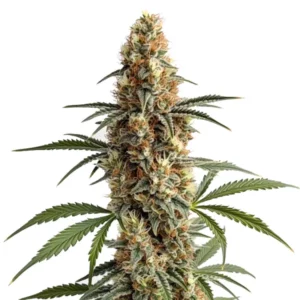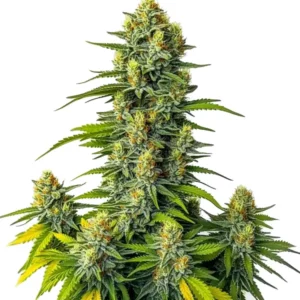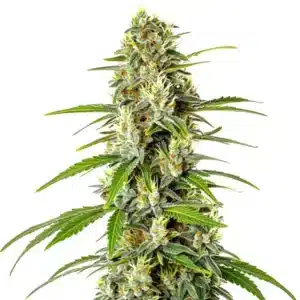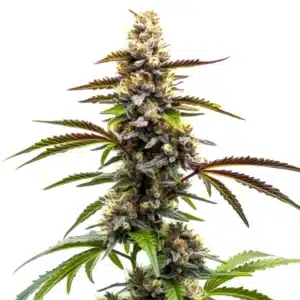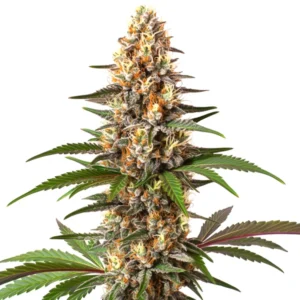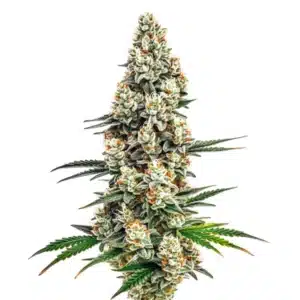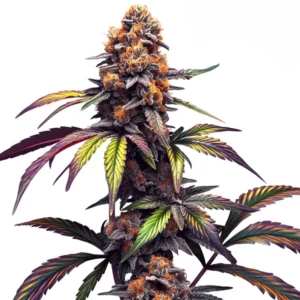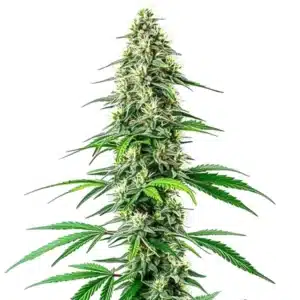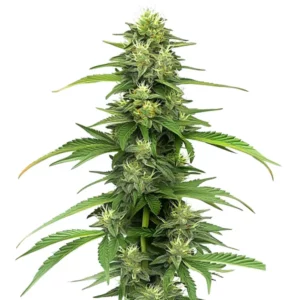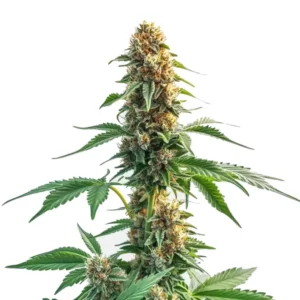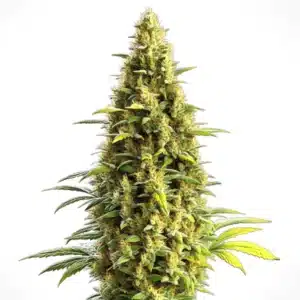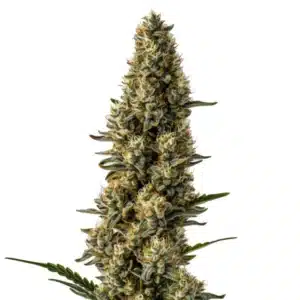
Knowing and Protecting Plants: CBG and CBN
Presentation to CBG and CBN
Defining CBG
CBG, or Cannabigerol, is often referred to as the “mother of all cannabinoids” due to its pivotal function in the formation of other cannabinoids such as THC and CBD. This non-psychoactive compound is typically found in smaller quantities in the cannabis plant, usually less than 1%. Despite its low concentration, CBG holds immense potential due to its unique interactions with the body’s endocannabinoid system. Researchers suggest that CBG could have a wide range of therapeutic applications, from anti-inflammatory properties to neuroprotection.
CBG begins as cannabigerolic acid (CBGA), the acidic form of CBG. Through enzymatic processes, CBGA is converted into various cannabinoids, including THCA, CBDA, and CBCA. The decarboxylation of these acidic cannabinoids results in the formation of THC, CBD, and CBC, respectively. Therefore, CBG is a precursor to the more well-known cannabinoids, underlining its fundamental importance in the cannabis plant. As interest in cannabis research grows, CBG is gaining recognition for its potential therapeutic benefits.
Recommended Strains
Mamba Negra
|
|
THC | 18% (Medium) |
|
|
Type | Feminized |
|
|
Yield | High |
|
|
Phenotype | 55% Indica / 45% Sativa |
Mamba Negra Auto
|
|
THC | 8% - 15% (Low) |
|
|
Type | Autoflowering |
|
|
Yield | Low |
|
|
Phenotype | 80% Indica / 20% Sativa |
Defining CBN
CBN, or Cannabinol, is another intriguing cannabinoid that emerges as THC ages. Unlike CBG, which is derived directly from the cannabis plant, CBN is primarily a byproduct of THC degradation. This process can occur naturally over time or be accelerated by exposing THC to heat and light. CBN is mildly psychoactive, but its effects are considerably less potent than those of THC, making it a unique compound worthy of exploration.
CBN’s reputation as a “sleepy” cannabinoid comes from its potential sedative properties, which have been noted in both anecdotal evidence and preliminary studies. This cannabinoid interacts with the body’s endocannabinoid system, influencing both CB1 and CB2 receptors, albeit with lower affinity than THC. As a result, CBN may offer a range of potential benefits, from promoting relaxation to supporting a healthy immune response.
Promos & Deals
Properties and Characteristics
Chemical Profiles of CBG and CBN
The chemical composition of CBG and CBN plays a crucial role in their effects and potential applications. CBG, with its non-psychoactive nature, has a molecular structure that allows it to interact with the body’s CB1 and CB2 receptors, influencing a variety of physiological processes. Its ability to inhibit the uptake of the neurotransmitter GABA may lead to muscle relaxation and a calming effect, which is why CBG is being explored for its potential anti-anxiety and muscle-relaxing properties.
On the other hand, CBN results from the oxidation and decomposition of THC, leading to its distinct chemical profile. While it shares some structural similarities with THC, the presence of additional oxygen molecules alters its interaction with cannabinoid receptors. This altered interaction is believed to contribute to CBN’s mild psychoactive and potential sedative effects. The unique chemical profiles of both cannabinoids underscore their potential for diverse therapeutic applications.

Unique Effects on the Body
CBG and CBN offer unique effects on the human body, largely due to their distinct interactions with the endocannabinoid system. CBG is known for its potential to support mood regulation, pain relief, and even appetite stimulation without inducing the psychoactive effects commonly associated with THC. This makes CBG an attractive option for individuals seeking therapeutic benefits without the high.
Conversely, CBN has been associated with potential sedative effects, making it a potential ally for those struggling with sleep-related issues. Additionally, CBN is being studied for its potential antibacterial properties, which could open new avenues for its use in medical and therapeutic contexts. Both cannabinoids offer a unique profile of effects, showcasing the diverse potential of cannabis compounds.
Medical and Therapeutic Uses
Applications of CBG
CBG is gaining attention for its potential medical applications, with research suggesting it could play a role in various health-related areas. Some studies have indicated that CBG may possess anti-inflammatory properties, making it a potential candidate for managing conditions such as inflammatory bowel disease and arthritis. Additionally, CBG’s interaction with serotonin receptors may offer potential benefits for mood regulation and anxiety relief.
Moreover, CBG is being explored for its neuroprotective properties, with some studies suggesting it could support brain health and potentially slow the progression of neurodegenerative diseases. The compound’s ability to stimulate appetite without psychoactive effects also makes it a potential option for individuals dealing with appetite loss due to medical treatments or conditions. As research into CBG continues, its therapeutic potential becomes increasingly evident.
Applications of CBN
CBN holds its own in the realm of potential therapeutic applications, with its sedative properties being one of the most notable. This makes CBN a cannabinoid of interest for individuals dealing with insomnia or other sleep-related issues. Some users report that CBN helps them achieve a more restful night’s sleep, contributing to its growing popularity as a natural sleep aid.
Beyond its potential sleep-enhancing properties, CBN is also being explored for its antibacterial effects. Preliminary studies have shown that CBN may possess the ability to fight certain bacterial infections, offering a new avenue for its use in medical treatments. Additionally, CBN’s potential anti-inflammatory properties could support its use in managing conditions like pain and inflammation. The diverse applications of CBN highlight its potential as a versatile therapeutic agent.
Comparative Analysis
Benefits Comparison between CBG and CBN
When comparing the benefits of CBG and CBN, it’s important to consider their unique properties and effects. CBG, with its non-psychoactive nature, offers potential benefits such as anti-inflammatory properties, neuroprotection, and mood regulation. Its ability to interact with serotonin receptors and influence GABA uptake further enhances its therapeutic potential, making it an appealing option for individuals seeking holistic health support.
In contrast, CBN’s potential benefits are closely tied to its mild psychoactive properties and sedative effects. Individuals struggling with sleep issues may find CBN particularly beneficial, as it may help promote relaxation and improve sleep quality. Additionally, CBN’s potential antibacterial and anti-inflammatory properties broaden its therapeutic applications, offering potential relief for various conditions. Both cannabinoids showcase unique benefits, contributing to a more comprehensive understanding of cannabis compounds.
Usage in Different Cannabis Products
The growing interest in CBG and CBN has led to their incorporation into a wide range of cannabis products. CBG is often found in oils, tinctures, and capsules, allowing users to experience its potential benefits in a convenient and controlled manner. Its non-psychoactive nature makes it a popular choice for daytime use, as it can provide therapeutic effects without impairing cognitive function.
CBN, on the other hand, is frequently included in products designed to support sleep and relaxation, such as edibles, capsules, and oils. Its potential sedative effects make it an ideal candidate for nighttime use, helping users unwind and achieve restful sleep. The versatility of both cannabinoids allows them to be used in various products, catering to different preferences and needs.

FAQs about what is cbg and cbn
What are CBG and CBN?
CBG and CBN are two distinct cannabinoids found in the cannabis plant, each with its own unique properties and potential applications. CBG, or Cannabigerol, is often referred to as the “mother of all cannabinoids” due to its role as a precursor to other cannabinoids. It is non-psychoactive and known for its potential anti-inflammatory and neuroprotective effects.
CBN, or Cannabinol, is a byproduct of THC degradation and is mildly psychoactive. It is often associated with potential sedative effects, making it a popular choice for individuals seeking natural sleep support. Both cannabinoids interact with the body’s endocannabinoid system, offering a range of potential benefits.
How do CBG and CBN differ from each other?
CBG and CBN differ in their origins, chemical structures, and effects on the body. CBG is a precursor cannabinoid, meaning it is involved in the formation of other cannabinoids like THC and CBD. It is non-psychoactive and interacts with both CB1 and CB2 receptors, offering potential benefits such as anti-inflammatory and neuroprotective effects.
CBN, on the other hand, is a degradation product of THC and is mildly psychoactive. It is primarily associated with sedative effects and is often used to promote sleep and relaxation. While both cannabinoids interact with the endocannabinoid system, their distinct properties and effects make them suitable for different applications.
What are the key benefits of each cannabinoid?
CBG is known for its potential anti-inflammatory and neuroprotective benefits, making it a promising option for individuals dealing with conditions like inflammatory bowel disease and neurodegenerative diseases. Its interaction with serotonin receptors also suggests potential benefits for mood regulation and anxiety relief.
CBN, with its potential sedative effects, is often used to support sleep and relaxation. Additionally, its antibacterial and anti-inflammatory properties offer potential benefits for managing infections and inflammation. Both cannabinoids offer unique benefits, highlighting their potential as therapeutic agents.


